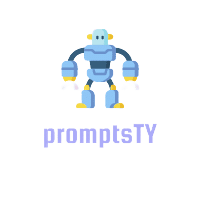If you’ve ever found yourself stuck on how to inject some excitement into your story, you’re not alone. We all crave those jaw-dropping twists that leave readers gasping, but thinking of them can be tough. Writers face this challenge frequently, just when a plot seems to fall flat.
The great news is that you’re in the right place! By exploring effective prompts and techniques, you can turn your stories into unpredictable journeys that keep readers hooked. Stick around, and you’ll discover all the tools you need to craft unexpected turns that’ll keep everyone on their toes.
From tantalizing prompts to common pitfalls, we’ll cover everything you need to know. Let’s dive in and unleash the surprising potential of your storytelling!
Key Takeaways
- Use specific prompts in ChatGPT to generate surprising plot twists tailored to different genres.
- Start with a solid premise and clear character goals for better twist suggestions.
- Iterate on ideas by refining outputs and exploring different angles for depth.
- Avoid clichés and ensure twists align with the story to maintain reader engagement.
- Balance surprises with realistic character reactions to enhance the impact of your twists.
- Combine prompts from different genres to spark innovative story ideas and unique twists.

Best ChatGPT Prompts for Plot Twists
Crafting effective plot twists can elevate your storytelling from predictable to mind-blowing. Here are some prompts you can use in ChatGPT to spark unexpected narrative developments:
- “Generate a plot twist for a mystery novel where the detective is revealed to be the perpetrator.”
- “Create a shocking twist for a romantic story where the love interest turns out to be related to a significant past tragedy.”
- “Suggest a surprising ending for a fantasy tale where the hero discovers they have been a pawn in a game played by a god.”
- “Provide an unexpected plot development for a horror story involving a haunted object that protects rather than harms.”
- “Give me a twist in a thriller where the supposed victim is actually orchestrating everything behind the scenes.”
These prompts can help you break the mold and create engaging, unpredictable stories.
How to Use ChatGPT for Crafting Unexpected Story Turns
Using ChatGPT to create unexpected story turns is straightforward and can add layers of complexity to your narrative. Here’s how to make the most of it:
- Start with a solid premise: Describe your main characters and their goals to give ChatGPT context.
- Ask for specific twists: Instead of vague requests, be clear about the kind of twist you’re seeking. For example, “Suggest a twist where the hero’s best friend betrays them.”
- Iterate and refine: Review the outputs and ask follow-up questions to explore different angles or develop ideas further.
- Experiment with genres: Change the genre or tone to see how the twists vary. Try asking, “What if this twist was in a comedic setting instead?”
This interactive approach not only makes your writing process more dynamic but also enriches the storyline.
Creative Prompts to Generate Surprising Endings
Crafting a surprising ending can leave your readers in awe and provoke thoughtful discussion. Here are some prompts to help you achieve that:
- “Create an ending where the main character wakes up and realizes it was all a dream, but it leads to a new revelation about reality.”
- “Imagine a story where the protagonist learns that they have been sharing their consciousness with a parallel version of themselves.”
- “Suggest an ending for a suspense thriller where the final showdown reveals an unexpected ally.”
- “Propose a plot twist in a coming-of-age story where the friend group dissolves, leading to each character’s individual growth.”
- “Write an unexpected conclusion for a sci-fi story where humanity learns it is not alone, but the other beings want to be left alone.”
These prompts encourage the development of endings that challenge expectations and engage your audience.
Examples of Plot Twist Prompts for Different Genres
Every genre has its conventions, but plot twists can subvert these expectations. Here are prompts tailored for various genres:
- Thriller: “Develop a plot twist where the forensic evidence points to a different killer, but it turns out they’re not innocent.”
- Fantasy: “Outline a twist where the mythical creature allies with the antagonist for revenge against the protagonist.”
- Romance: “Describe a scenario where the couple’s biggest challenge stems from a deep family secret revealed at the wedding.”
- Horror: “Create a twist where the protagonist discovers they’ve been dead since the beginning of the story.”
- Sci-fi: “Suggest a twist in a space opera where the main ship is actually an AI programmed to keep the crew unaware of a more significant threat.”
Using these genre-specific prompts can facilitate more tailored and engaging storytelling.

Tips for Writing Effective Plot Twists with ChatGPT
Writing effective plot twists is an art that can transform a good story into a great one.
Start by building a strong foundation for your characters; their motivations should be clear to the reader.
When creating a twist, ensure it aligns with the established story elements, avoiding a random feel.
Use foreshadowing subtly—hint at the twist without revealing it outright, keeping the reader intrigued.
Consider pacing; the twist should come at a moment that feels earned, surprising yet satisfying.
Don’t forget to balance your surprise with believable character reactions; they should feel genuine in the moment of revelation.
Finally, ask ChatGPT for prompts like: “Suggest a plot twist where the protagonist’s biggest flaw becomes their greatest strength in the climax.” This will generate creative angles for your narrative.
Common Mistakes to Avoid When Using Plot Twist Prompts
There are several pitfalls to avoid in writing plot twists that can undermine your story.
One of the most common mistakes is relying on clichés; overused tropes can leave your readers feeling disappointed.
Be wary of twists that don’t match your established plot; inconsistencies can confuse readers and break immersion.
Another misstep is creating misleading twists without proper setup, leading to frustration rather than surprise.
Overcomplicating twists can also backfire—sometimes simpler is better for a clean, impactful reveal.
When using ChatGPT, try prompts such as: “List three mistakes to avoid when crafting a thrilling plot twist.” This ensures you have a clear checklist to follow.
How to Combine Prompts for Unique Story Ideas
Combining prompts can lead to innovative and unique story ideas that stand out.
Start by selecting prompts from different genres to see how they can intertwine; this can spark creativity.
For example, merge a thriller prompt with a fantasy twist to create a compelling narrative.
Use ChatGPT to explore this by requesting: “Combine a mystery prompt with a sci-fi element and suggest a plot idea.” This will produce fascinating mashups.
Experiment with different combinations; sometimes, the most eclectic mix yields the best results.
Also, don’t hesitate to blend two prompts focusing on characters or settings for deeper integration, like: “Take a romance prompt and add a horror twist to it.” This will generate unique story possibilities.
Resources for Further Learning About Plot Twists
If you’re looking to deepen your understanding of plot twists, numerous resources can help you refine your skills.
Books on storytelling techniques are invaluable; consider titles like “The Story Grid” by Shawn Coyne or “Save the Cat!” by Blake Snyder.
Online courses focusing on creative writing often provide insights on plot development; platforms like MasterClass offer courses by established authors.
Explore articles that analyze famous plot twists to understand what makes them effective; these can offer inspiration and valuable techniques.
Joining writing communities and forums allows you to exchange ideas and gain feedback, increasing your knowledge through collaboration.
Listening to storytelling podcasts like “Writing Excuses” can also offer tips directly from experienced writers.
Don’t forget about educational videos on YouTube that cover narrative techniques; sometimes, a visual explanation can be more helpful.

How to Combine Prompts for Unique Story Ideas
Combining different prompts can spark some truly unique story ideas that stand out from the crowd.
Start by thinking about two or more prompts that have distinct themes, genres, or character arcs.
For instance, try mixing a fantasy prompt with a thriller component.
Use specific commands like: “Combine a romance storyline with a horror twist and generate a plot idea.”
This approach can create fascinating mashups that are both engaging and unexpected.
Additionally, look for prompts that emphasize different elements, such as character motivation versus a plot setting.
An example prompt could be: “Merge a character-driven drama prompt with a sci-fi scenario.”
Don’t be afraid to play around with different combinations; the more eclectic the mix, the more intriguing the results are likely to be.
Lastly, ensure the merged prompts create a cohesive narrative, maintaining a logical flow throughout your story.
Resources for Further Learning About Plot Twists
If you want to deepen your knowledge on plot twists, there are plenty of useful resources available to help you develop your skills.
Start with books focused on storytelling techniques; titles like “The Anatomy of Story” by John Truby are excellent options.
Online learning platforms, such as Coursera or Skillshare, offer courses specifically on creative writing, which include sections on plot development.
You might also find it helpful to analyze articles that dissect popular plots, learning what makes them effective, like exploring iconic plot twists from films and literature.
Participating in writing communities on platforms like Reddit or Wattpad can provide you with feedback and fresh ideas from fellow writers.
Listening to podcasts like “The Writer’s Journey” can also enlighten you on the nuances of constructing unpredictable narratives.
Finally, check out YouTube for insightful videos covering writing techniques, especially those focused on crafting engaging twists.
FAQs
Effective prompts include scenarios like “What if the hero discovers their ally is the villain?” or “Suddenly, an unassuming character reveals their hidden power.” These setups challenge assumptions and can lead to engaging twists.
Combine prompts by merging genres or character types, such as “A detective with a secret prophecy.” This hybrid approach often sparks unexpected ideas and deepens plot complexity, enriching your storytelling.
Avoid overusing clichés and predictable twists. Ensure your twists align logically with character development and story progression. Also, don’t rush the reveal; build anticipation for a more impactful twist.
To maintain believability, lay subtle hints throughout the narrative. Ensure character actions and motivations support the twist. Additionally, allowing for some foreshadowing without revealing the outcome can create a satisfying surprise.
